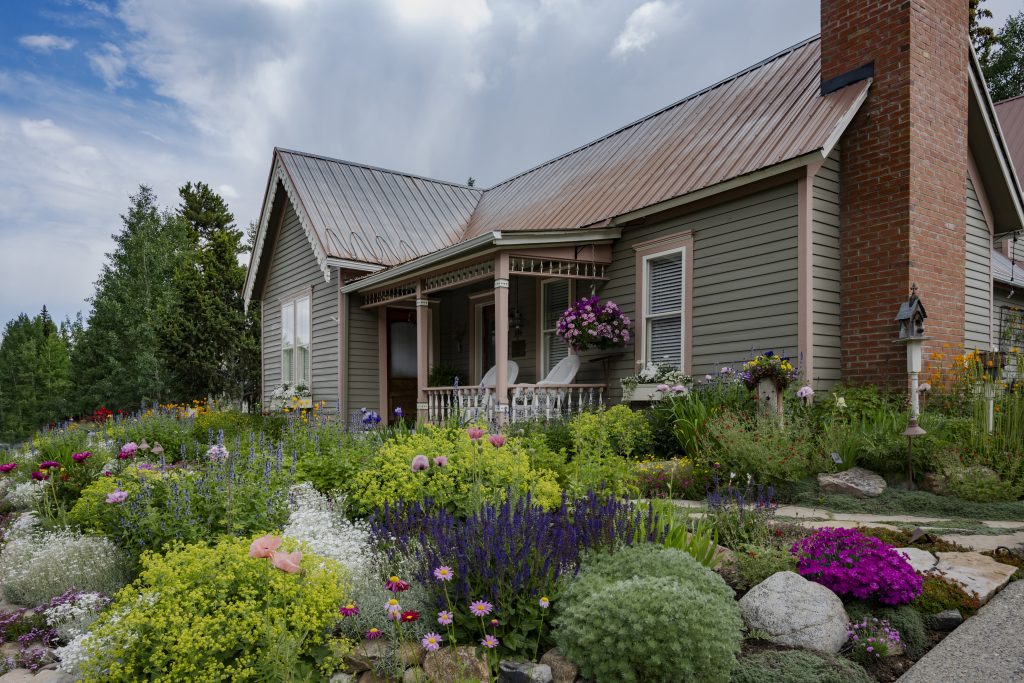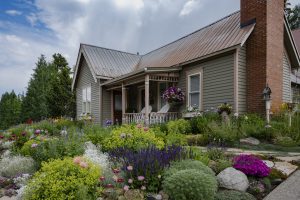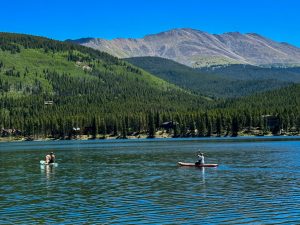Ask Eartha: What are the best summertime plants for landscaping in Summit County?
Ask Eartha

High Country Conservation Center/Courtesy photo
Dear Eartha, I am currently making plans to update the landscaping at my home. With how hot and dry it is here in Summit, what are the best plants to use?
Here in Summit County, we know a thing or two about dry conditions. With our sunny skies and prolonged drought conditions, it’s no surprise that many locals are rethinking how they landscape their yards. More and more homeowners are swapping out thirsty lawns for native plants. And as it turns out, doing so doesn’t just save water. It also gives a vital boost to our pollinators. And the best part? Native plants and pollinators work together naturally to create low-maintenance, water-wise landscapes that thrive in our unique environment.
Built for our climate
Native plants are species that have grown in a region for thousands of years. They’ve evolved to handle exactly what Summit County throws at them: dry air, fluctuating temperatures, poor soil, and intense sun at high elevations. Unlike imported plants or Kentucky bluegrass (the grass in most lawns), Colorado natives like blanketflower, blue grama, serviceberry and Rocky Mountain penstemon don’t need daily watering, pesticides, or pampering to stay healthy and vibrant.
According to the EPA, outdoor irrigation accounts for nearly one-third of all residential water use, about 9 billion gallons per day nationwide. In Colorado, where 55% of household water goes to landscaping, that number is even more impactful due to the scarcity of water in the west. Replacing even a portion of your grass with native plants can reduce your water use by 50–75%, especially once deep root systems are established.
Pollinators keep it buzzing
Let’s not forget our lovely pollinators. Tiny powerhouses like bees, butterflies, hummingbirds, moths, beetles and even bats are responsible for fertilizing more than 75% of flowering plants and nearly one-third of the food we eat.
Many pollinators have evolved alongside specific native plants. They are considered “specialists,” meaning they only feed or lay eggs on a narrow range of native flowers. When those plants disappear, so do the pollinators that rely on them. For example, monarch butterflies depend on milkweed to survive.
Unfortunately, pollinators are in trouble, as habitat loss, pesticide exposure and climate change have caused steep population declines. That’s why planting native species is so important. Not only do native plants bloom in sync with local pollinators’ life cycles, they also provide the specific nectar, pollen, and shelter these creatures need to survive and thrive.
Conserving water, supporting ecosystems
Here’s where things really come together. Native plants and pollinators support each other; and together, they help conserve water and protect Colorado’s fragile ecosystems.
Healthy plant cover, thanks in part to successful pollination, means less bare soil, more water infiltration, and reduced erosion. Native gardens help keep water where it belongs, soaking into the soil instead of running off into streets and storm drains. They also improve soil health and support biodiversity across the food chain.
Unlike manicured lawns, which often require chemical fertilizers, herbicides, and pesticides to look their best, native plants don’t need synthetic inputs. That means fewer pollutants in our rivers and groundwater and a safer outdoor space for your family, pets, and local wildlife.
Get Started the Colorado Way
You don’t need to overhaul your entire yard to make a big difference. Start small with a wildflower patch, a pollinator strip along your driveway, or converting part of your lawn to native grasses and perennials.
High Country Conservation Center has resources available to help you transform your grass into a pollinators’ paradise. Already have a garden, but need some help making sure your irrigation system is working effectively? High Country Conservation Center has rebates available to help make that happen.
Small steps, big impact
In a state where water is precious (and drought is a recurring reality) planting native plants is one of the most effective ways to shrink your water footprint. This isn’t just a garden trend, it’s an act of stewardship. You’re helping conserve water, protect pollinator populations, and create a thriving micro-ecosystem that benefits both people and wildlife.
So, whether you’re in Breckenridge, Silverthorne or anywhere in between, consider turning part of your yard into a beautiful, water-saving, pollinator-friendly habitat. It’s good for the planet, and even better for Summit County.
Ask Eartha Steward is written by the staff at the High Country Conservation Center, a nonprofit dedicated to waste reduction and resource conservation. Submit questions to Eartha at info@highcountryconservation.org.


Support Local Journalism

Support Local Journalism
As a Summit Daily News reader, you make our work possible.
Summit Daily is embarking on a multiyear project to digitize its archives going back to 1989 and make them available to the public in partnership with the Colorado Historic Newspapers Collection. The full project is expected to cost about $165,000. All donations made in 2023 will go directly toward this project.
Every contribution, no matter the size, will make a difference.









